Museum Kolding
Museum Kolding brings Danish identity, culture and democracy to life through three powerful locations:
Staldgården – city history and archives in central Kolding
Christiansfeld – the UNESCO town with Moravian heritage
Skamlingsbanken – Denmark’s museum of freedom of speech in scenic surroundi
Staldgården
Staldgården has a long history, which goes hand in hand with Koldinghus Castle. Staldgården is the large white building on the castle bank in the city centre of Kolding, and stands (almost) as it was built in the 17th century, as a replacement for the half-timbered building that had previously housed the royal horses. The stable farm has for several hundred years served as a stable for royal horses, for the Holstein Lance Regiment, for training the army's young horses - and during the Second World War as Gestapo's headquarters in the southern part of Jutland.
During the occupation, the Gestapo seized the Staldgården. and established its headquarters for the southern part of Jutland. One of the prison cells, Zelle II, has been preserved intact, and on the walls you can see names and inscriptions scratched by the prisoners. The cell is protected and forms part of Museum Kolding.
In Zelle II, guests and visitors can see three different digital narratives, each with their own focus, leading the audience right into the old cell. In connection with Zelle II, Museum Kolding has its exhibition at Staldgården - the exhibition; '1943 - The Gestapo is coming' is about Kolding during the occupation and the people who fought on either side. Meet Snogen and Jenny Holm, who were henchmen for the Gestapo.
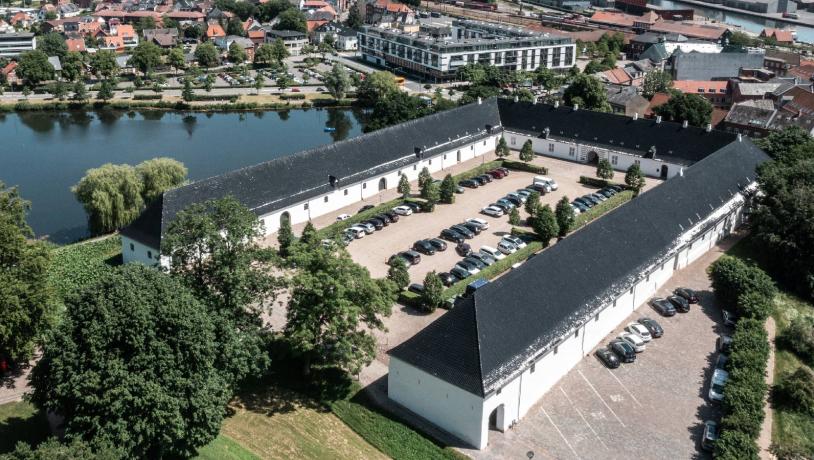
Photo:Museum Kolding
Staldgården in Kolding - The headquarters of Gestapo in Southern Jutland during the occupation.

Photo:Museum Kolding
Zelle 2 - Denmark's sole preserved Gestapo-celle - at Staldgården in Kolding
Skamlingsbanken i Kolding
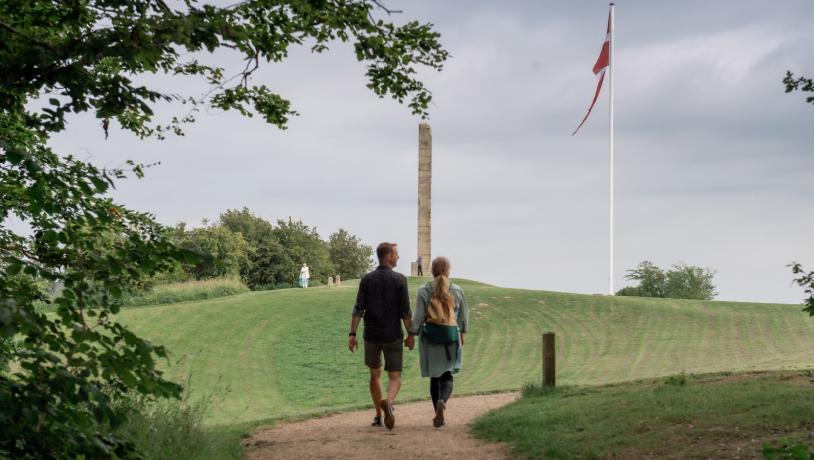
Photo:Museum Kolding
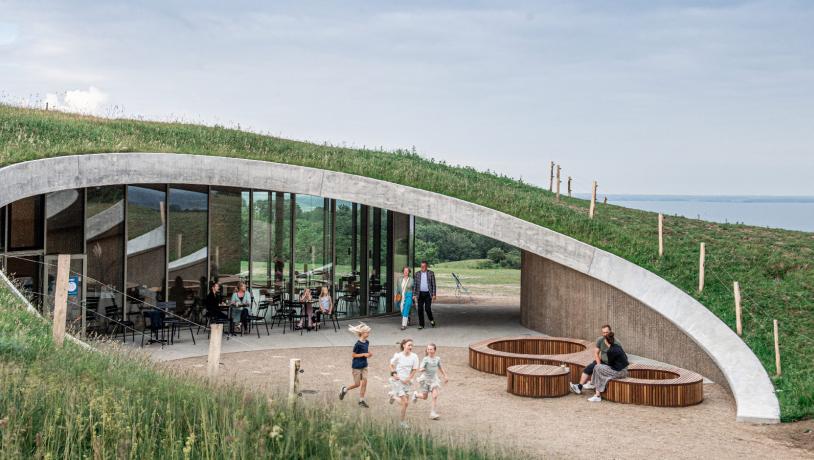
Photo:Museum Kolding
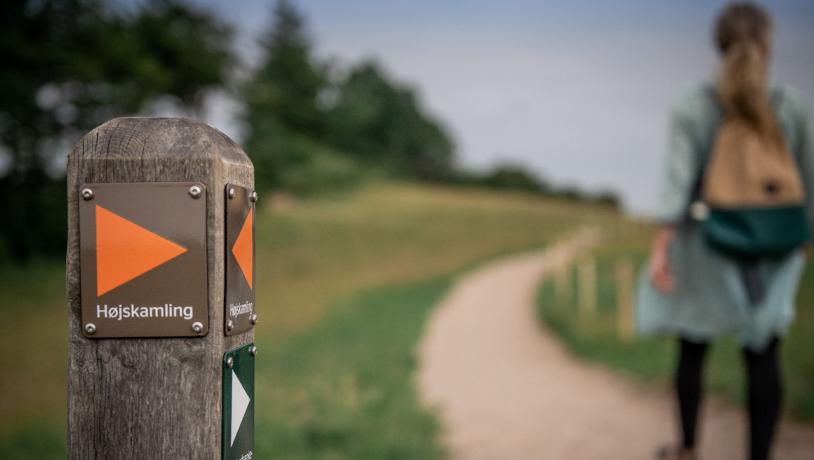
Photo:Museum Kolding
Nature at Skamlingsbanken speaks its own language. And is in itself worth a visit.
The place has been shaped by the forces from the last ice age, when the ice from the Little Belt pushed rocks and clay in front of it, and this is how the distinctive moraine landscape with steep hills and gorges was formed. At the very top, on Højskamlingen, you rise 113 meters above the sea – the view is unparalleled. Probably Denmark's most beautiful.
Skamlingsbanken is a public meeting point. A place where throughout time, and today, you have as the family's excursion destination - the place for a real cozy moment. Important incidents from Denmark's history are told at Skamlingsbanken, and since 1843 the place has been a popular and national gathering place. Great speakers have stood on the bench and spoken with a power that has changed relationships for many.
In the Visitor Center; the power of nature, place, speech and gathering. The forces are the thematic framework of the installation and associated with the landscape. The story draws lines in the landscape, where the real story is, and thus has a special connection to the place and conveys the story of a unique, traditional and popular excursion destination. The architecture also plays a role in the Visitor Centre, as it has been thoroughly considered. The visitor center is built into the cliff so that nature remains as undisturbed as possible, and with a large window section overlooking the Little Belt, it is an architectural portal to the site's history.
At Skamlingsbanken, there are several trotting routes, both for a stroll on the top of the bank or a more strenuous hike - the choice is yours. The terrain is a bit hilly - remember, it is the highest mountain in the southern part of Jutland.
At the Visitor Center: the power of nature, place, speech, and collection. These forces form the thematic framework of the installation, closely connected to the landscape. The narrative extends into the surroundings, where the real story unfolds, creating a unique bond to the location and conveying the tale of a traditional and popular excursion spot.
Architecture plays a significant role in the Visitor Center, as it has been carefully designed. Built into the slope, it ensures the natural surroundings remain as undisturbed as possible. With a large window offering views over the Little Belt, it serves as an architectural gateway to the history of the site.
At Skamlingsbanken, several walking routes have been established, ranging from a leisurely stroll atop the hill to a more demanding hike – the choice is yours. The terrain is slightly hilly – after all, it is Southern Jutland’s highest point.
Christiansfeld - UNESCO World Heritage Site
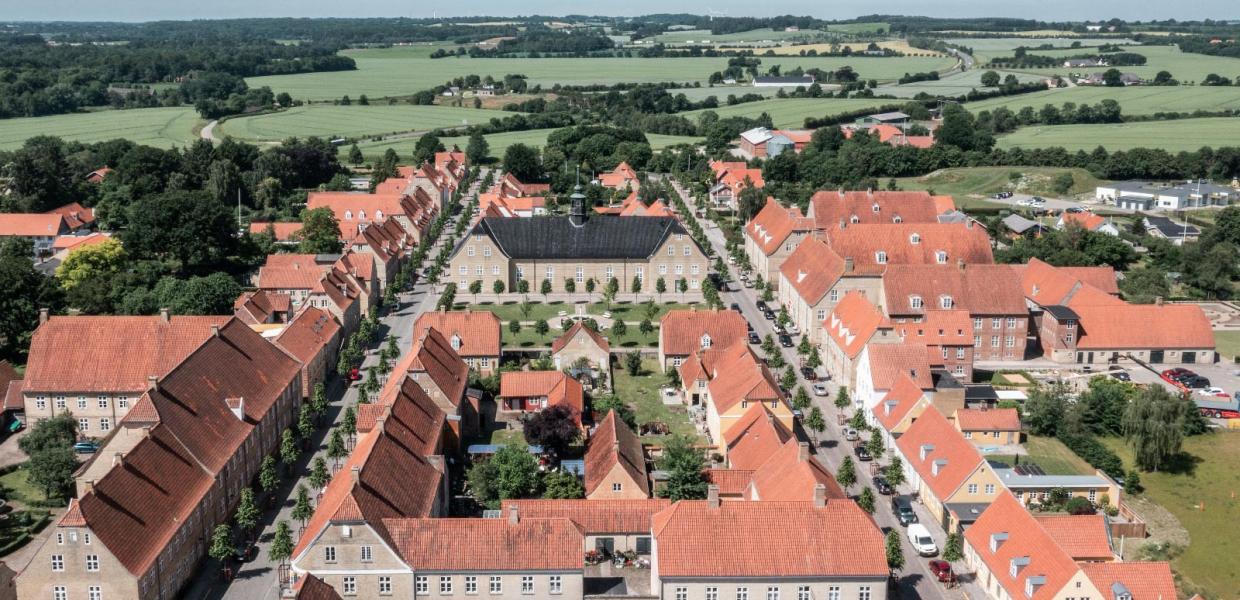
Photo:Museum Kolding
Christiansfeld is one of the world heritage sites in Denmark - a cultural experience in a class of its own!
The city has a very special atmosphere that exudes tranquility and gives you the opportunity to slow down. The city is an experience, with its straight streets, lined with linden trees and symmetrical houses made of the characteristic yellow bricks – all in all, a pearl of architecture and urban planning.
In the town center there are wonderful shops and the cake bakers conjure up the most delicious honey hearts.
Christiansfeld was inscribed on the UNESCO World Heritage List in 2015 as a testament to a cultural tradition and an example of impressive architecture.
On a trip to Herrnhut, King Christian VII was so impressed by the Brethren's craftsmanship that, with a vision of creating growth, he invited the congregation to Denmark and gifted them with a piece of land.
The Brethren congregation founded Christiansfeld in 1773. The Brethren congregation is an Evangelical Lutheran free congregation and part of a worldwide brotherhood with cities and congregations in many countries.
The Brethren's skilled craftsmen created their own take on the perfect society - with symmetry, community and equality between the town's people.
Come inside Søstrehuset, see exhibitions, walk around the corridors, where you marvel at the simplicity and solemnity that reigns in the building and go exploring in the museum shop.

Photo:Museum Kolding
The museum shops
Visit the museum shops in Christiansfeld and at Skamlingsbanken and find the perfect gift og souvenir. The products primarily come from Danish cooperations with craftsmanship and sustainability in focus. The selection varies and is continously changed and adjusted, which ensures you new experiences and inspiration.
You may visit the museum shops without a ticket to the museums.
For children
During the Danish school holiday season Museum Kolding will make activities for children. Find the activities at the website www.museumkolding.dk
Moreover, during the year it is possible to go outdoor exploring in Christiansfeld and Kolding.

